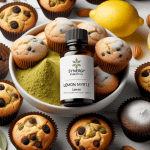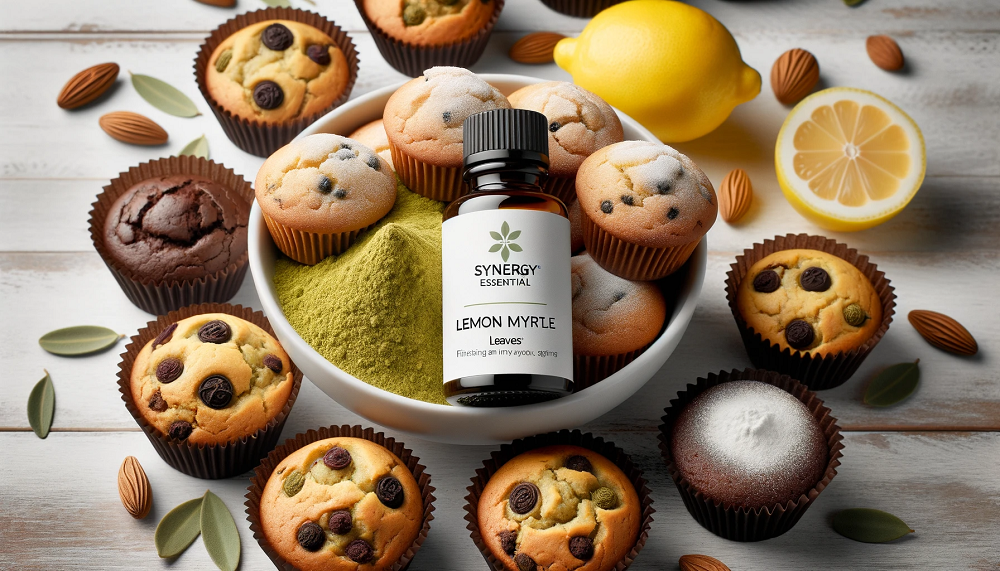Manuka Honey vs. Regular Honey: What Sets Them Apart? latest news – 7 Remarkable Differences Revealed in 2025!
| Heading | Description |
|---|---|
| Introduction: A Sweet Comparison | An engaging introduction to the intriguing debate of Manuka Honey vs. Regular Honey and the latest news in 2025. |
| Manuka Honey vs. Regular Honey: What Sets Them Apart? latest news | A deep dive into the defining factors that make Manuka Honey distinct from regular honey, focusing on recent discoveries and research. |
| History and Origins | A detailed account of the origins of both Manuka and regular honey, tracing ancient traditions and modern applications. |
| Botanical and Geographical Sources | An exploration of the various flora and regions that contribute to the distinctiveness of Manuka honey. |
| Unique Antibacterial Properties | Insights into how methylglyoxal sets Manuka Honey apart from its counterparts by offering superior antibacterial benefits. |
| The Role of Methylglyoxal (MGO) | A study of the unique compound in Manuka honey that gives it potent antimicrobial properties. |
| Unique Manuka Factor (UMF): The Grading System | Understanding UMF and how it serves as a trust mark for identifying authentic Manuka honey. |
| Chemical Composition Insights | Comparative analysis of the chemical composition of Manuka and regular honey and its health implications. |
| Viscosity and Taste Differences | Discussion on how the texture and flavor of Manuka honey differ from regular honey in a sensory exploration. |
| Health Benefits of Manuka Honey | An overview of the scientifically supported health benefits of Manuka honey and its applications in wellness. |
| Nutritional Comparison | A comparison of the nutrition profiles and antioxidant properties between the two types of honey. |
| Processing and Production Methods | Examination of traditional versus modern production techniques for both Manuka and regular honey. |
| Sustainability and Ethical Harvesting | Insights into the environmental and ethical aspects of honey production, focusing on sustainable practices. |
| Market Trends in 2025 | Analysis of how consumer demand and market trends are shifting in favor of authentic Manuka honey. |
| Price and Value Comparison | Delving into the pricing factors and perceived value differences between Manuka and regular honey. |
| Culinary Uses and Applications | Examining the role of honey in culinary arts, from gourmet recipes to traditional remedies. |
| Cosmetic and Therapeutic Applications | How Manuka honey is used beyond the kitchen, including skincare and alternative medicine. |
| Global Demand and Supply Dynamics | Understanding the global logistics and market distribution channels for Manuka versus regular honey. |
| Environmental Impact and Conservation | A discussion on the ecological footprint of honey production and how Manuka honey production aligns with conservation efforts. |
| Storage, Shelf Life, and Potency | Exploring best practices in preserving the potency and flavor of both types of honey over time. |
| Consumer Reviews and Testimonials | An aggregation of client experiences and insights from users who have experienced both honeys. |
| Expert Opinions and Scientific Studies | Compilation of scholarly articles and research findings that back the benefits of Manuka honey. |
| Identifying Authentic Manuka Honey | Tips and guidelines on how to determine if your Manuka honey is genuine and meets quality standards. |
| Quality Assurance and Certifications | Informative discussion on the certification process and what consumers should look for on labels. |
| Looking Forward: Future Trends in 2025 and Beyond | Speculations and predictions on the evolving landscape of honey consumption and production innovations. |
| Frequently Asked Questions | An informative section addressing common questions about Manuka and regular honey. |
| Conclusions and Final Thoughts | A thoughtful wrap-up of the discussion, summarizing key distinctions and forward-looking statements. |
Introduction: A Sweet Comparison
The year 2025 shines a spotlight on the culinary and health debates that have engaged enthusiasts and scholars alike for decades. Today, we explore the intriguing topic of Manuka Honey vs. Regular Honey: What Sets Them Apart? latest news. With renewed interest in natural remedies and superfoods, honey continues to captivate the health-conscious, gourmet chefs, and researchers. In this evolving dialogue, the spotlight often drifts to Manuka honey—a substance celebrated for its unique antibacterial properties and potent healing benefits. Unlike regular honey, which has thrived on centuries-old traditions and everyday nutritional values, Manuka honey emerges with a scientific backing that sets it apart in terms of its composition and functional properties. Today, we start from the beginning: what is at the core of this sweet controversy? How did both honey types arise, and what makes Manuka honey resonate so distinctly with modern-day consumers? As we delve deeper, you’ll discover that it is not merely a byproduct of nature but a marvel stemming from meticulous harvesting, remarkable botanical origins, and rigorous scientific testing.
Drawing on diverse sources of expertise, including studies published by institutions like the National Center for Biotechnology Information and insights from traditional beekeepers, our narrative unfolds with an engaging mix of modern science and age-old wisdom. We also reference enriching content available on Wikipedia and other trusted resources. This article aims to bring clarity and enlightenment to anyone curious about the synergistic relationship between nature and human health—right in the heart of honey. So, prepare yourself for a journey that is as informative as it is delightful.
The debate over which honey reigns supreme is far from trivial. Many consider Manuka honey an elixir, while others champion the simplicity of regular honey. Each type merits attention for its myriad uses and potent natural benefits. Transitioning from anecdotal evidence to scientifically supported facts, the narrative herein is designed to cater to both critical inquiries and passionate endorsements. Let’s unravel the complexities and celebrate the natural sweetness that has transformed the culinary and health worlds alike.
As we proceed into the detailed sections of this extensive exploration, keep an eye on recurring motifs, such as the unique antibacterial effects of methylglyoxal, and the meticulous grading system by Unique Manuka Factor (UMF) that authenticates every jar of premium Manuka honey. These facts truly encapsulate why 2025 is a defining year in the evolution of natural health supplements. The subsequent sections provide a first-hand view of the evolution, production, taste, and value of this alluring substance, making it an essential read for both health professionals and aficionados of gourmet delights.
Manuka Honey vs. Regular Honey: What Sets Them Apart? latest news
In the ever-evolving landscape of natural health products, the distinction between Manuka honey and regular honey emerges with remarkable clarity. At its heart, Manuka Honey vs. Regular Honey: What Sets Them Apart? latest news is a topic that stokes debate and inspires deeper inquiry. This section unveils a multi-layered analysis that draws on the latest research in 2025. The major distinction lies in their biochemical compositions, directly influencing their antibacterial properties. Manuka honey, distinguished by its content of methylglyoxal (MGO), possesses a robust antibacterial profile that dwarfs that of regular honey. This compound, rarely found in high concentrations in other honeys, plays an integral role in combating harmful bacteria, thus elevating Manuka honey to a superfood status in the eyes of many health experts.
To truly understand the implications of these differences, it’s important to delve into the scientific mechanisms at play. The methylglyoxal agonizes bacterial membranes, restraining their replication and, in some cases, neutralizing antibiotic resistance. In contrast, regular honey exhibits milder antibacterial properties, primarily attributed to its natural hydrogen peroxide content. While this mechanism does impart some therapeutic benefits, it lacks the consistent potency demonstrated by Manuka honey. Therefore, while both types of honey are indeed valuable to health, the precision of Manuka’s antibacterial action offers a heightened promise in both preventive healthcare and targeted treatments.
The conversation is enriched by the rigorous grading system known as the Unique Manuka Factor (UMF). This benchmark plays an essential role in ensuring quality and authenticity in Manuka honey. Each jar is carefully tested and graded based on its UMF score—an indicator that informs consumers about its antibacterial strengths and elemental composition. The UMF rating does not exist for regular honey, which further accentuates the distinctiveness of Manuka honey in the marketplace. Consumers who choose Manuka honey over regular alternatives are often seeking a product that combines traditional natural healing with modern quality assurance and consistency.
Moreover, the impact of environmental factors and the botanical origins of the nectar cannot be understated. The Manuka tree, indigenous to New Zealand, contributes unique phytochemical properties that imbue its honey with a taste and texture quite unlike those produced by common honey bees interacting with diverse flora. These differences are not just sensory; they encapsulate a biochemistry that can enhance recovery in areas such as wound treatment and digestive health. Recent studies have underscored these benefits and continue to provide compelling evidence that supports the traditional uses of Manuka honey, alongside its emerging role in modern medicine.
In embracing both the historical context and fresh scientific data, this section confirms that the choice between Manuka and regular honey carries with it implications that extend far beyond mere taste. It is a decision rooted in efficacy, tradition, and, most importantly, a commitment to quality. As new research emerges each year, 2025 stands out with groundbreaking discoveries that reaffirm the spotlight on Manuka honey’s minute yet monumental differences.

